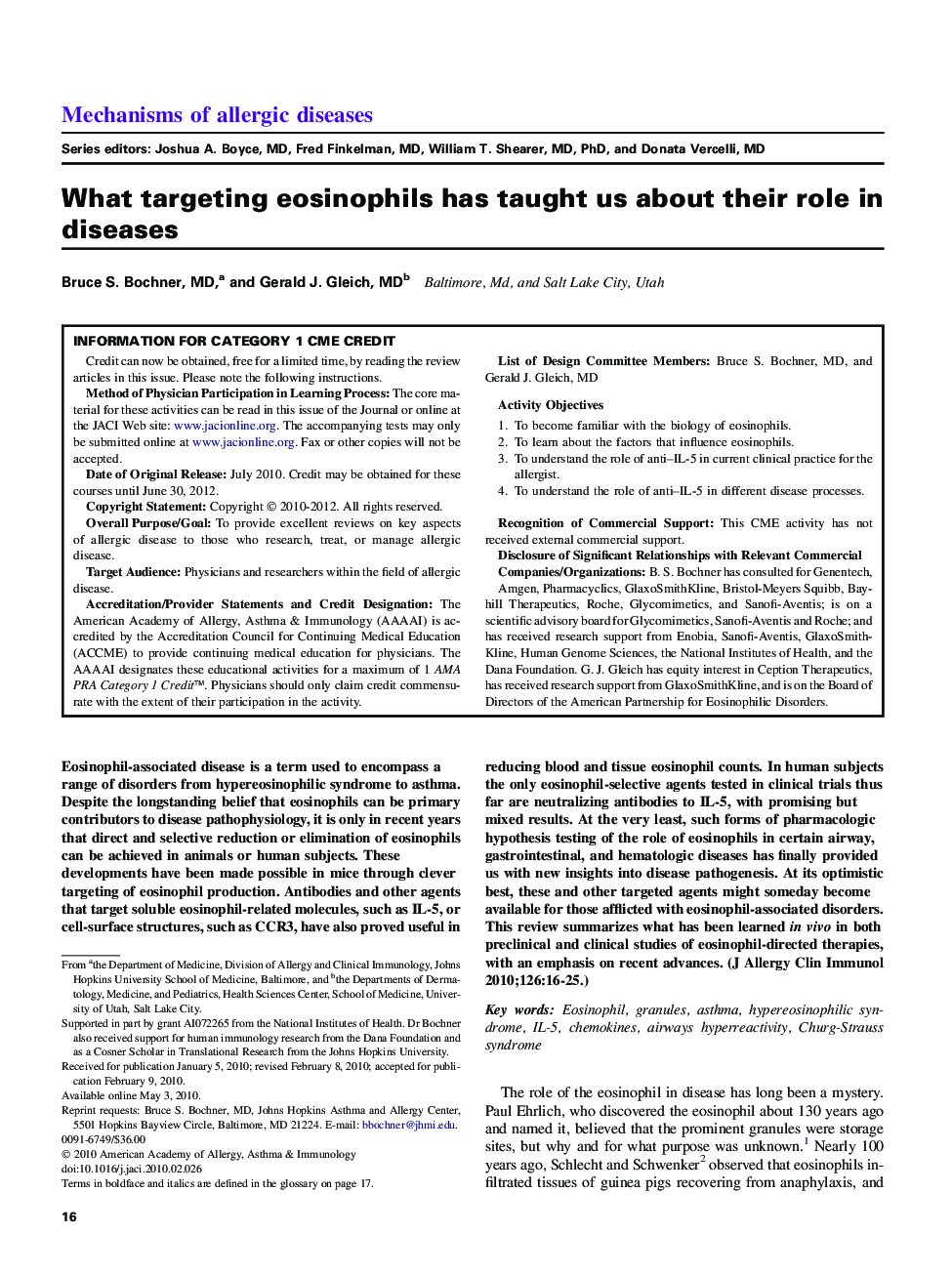| کد مقاله | کد نشریه | سال انتشار | مقاله انگلیسی | نسخه تمام متن |
|---|---|---|---|---|
| 3200280 | 1201931 | 2010 | 10 صفحه PDF | دانلود رایگان |

Eosinophil-associated disease is a term used to encompass a range of disorders from hypereosinophilic syndrome to asthma. Despite the longstanding belief that eosinophils can be primary contributors to disease pathophysiology, it is only in recent years that direct and selective reduction or elimination of eosinophils can be achieved in animals or human subjects. These developments have been made possible in mice through clever targeting of eosinophil production. Antibodies and other agents that target soluble eosinophil-related molecules, such as IL-5, or cell-surface structures, such as CCR3, have also proved useful in reducing blood and tissue eosinophil counts. In human subjects the only eosinophil-selective agents tested in clinical trials thus far are neutralizing antibodies to IL-5, with promising but mixed results. At the very least, such forms of pharmacologic hypothesis testing of the role of eosinophils in certain airway, gastrointestinal, and hematologic diseases has finally provided us with new insights into disease pathogenesis. At its optimistic best, these and other targeted agents might someday become available for those afflicted with eosinophil-associated disorders. This review summarizes what has been learned in vivo in both preclinical and clinical studies of eosinophil-directed therapies, with an emphasis on recent advances.
Journal: Journal of Allergy and Clinical Immunology - Volume 126, Issue 1, July 2010, Pages 16–25